For today’s post I wanted to share my jungle cactus collection, alongside my care routine + propagation experiments with this lovely group of plants. First of all, let’s address the obvious question — what are jungle cacti anyway? Plants in this group are quite possibly my favourite type of cacti to grow + ones that I would recommend to houseplant lovers that might not have those glorious south-facing windows to house a desert cactus collection. From the name, you’ll probably guess that they aren’t the cacti that live in arid-desert landscapes, but are actually ones that prefer a more luscious + tropical setting with dappled light + higher humidity levels. These might not be the conditions you think of when imagining a cactus so if you have recently got into houseplants, let me introduce an alternative type of cactus — sometimes also called forest cacti, that can often go unnoticed!
A couple of plants in this jungly group you might know already are the classic ‘holiday’ cactus — Schlumbergera + Hatiora… otherwise known as the Christmas/Thanksgiving + Eater cacti respectively. These humble plants divide opinion as they are sometimes considered a bit old-fashioned, but it’s interesting how some of the other more ‘trendy’ houseplants right now look surprisingly similar, yet are far less likely to bloom in a regular home environment! Also under the ‘jungle cacti’ umbrella are Rhipsalis, Epiphyllum/Disocactus, Selenicereus, Hylocereus, Pseudorhipsalis + Lepismium to name a few + are native to Central + Southern America. More generally, I’d say that if you enjoy growing jungle cacti, you might like to explore Hoyas a little bit more as they have similar requirements. On the other hand, if you have a few Hoya plants + haven’t dabbled with Jungle cacti yet, I’d highly recommend giving one a go — my starter pick would be a fishbone cactus I think!



There are some beautiful cacti in this group that are some of my most treasured houseplants + they are an extremely rewarding houseplant to grow. They can be pretty easy going to care for once you get a grasp of their needs + if you enjoy experimenting with some plant propagation, these are fun. I’ve had a great success rate in rooting cuttings of almost all of these — more on that later though! First, let’s take a closer look at my jungle cactus collection + how I care for them.
Disocactus anguliger / Epiphyllum anguliger / ric-rac cactus / fishbone cactus / zig zag plant
The fishbone cactus is perhaps the most widely available of the jungle cacti in this post + it’s the one I’ve had the longest. I think I’ve been growing this plant for around 4-5 years + in that time, it’s coped with periods of neglect + even a dramatic fall — when I managed to knock the plant right off the corner of my desk + onto the floor! Side note: I have since learned that the corners of desks are not a good place to precariously balance plants… But despite looking a little bit battered for a while, it bounced back + I even managed to propagate the couple of stems that snapped off.


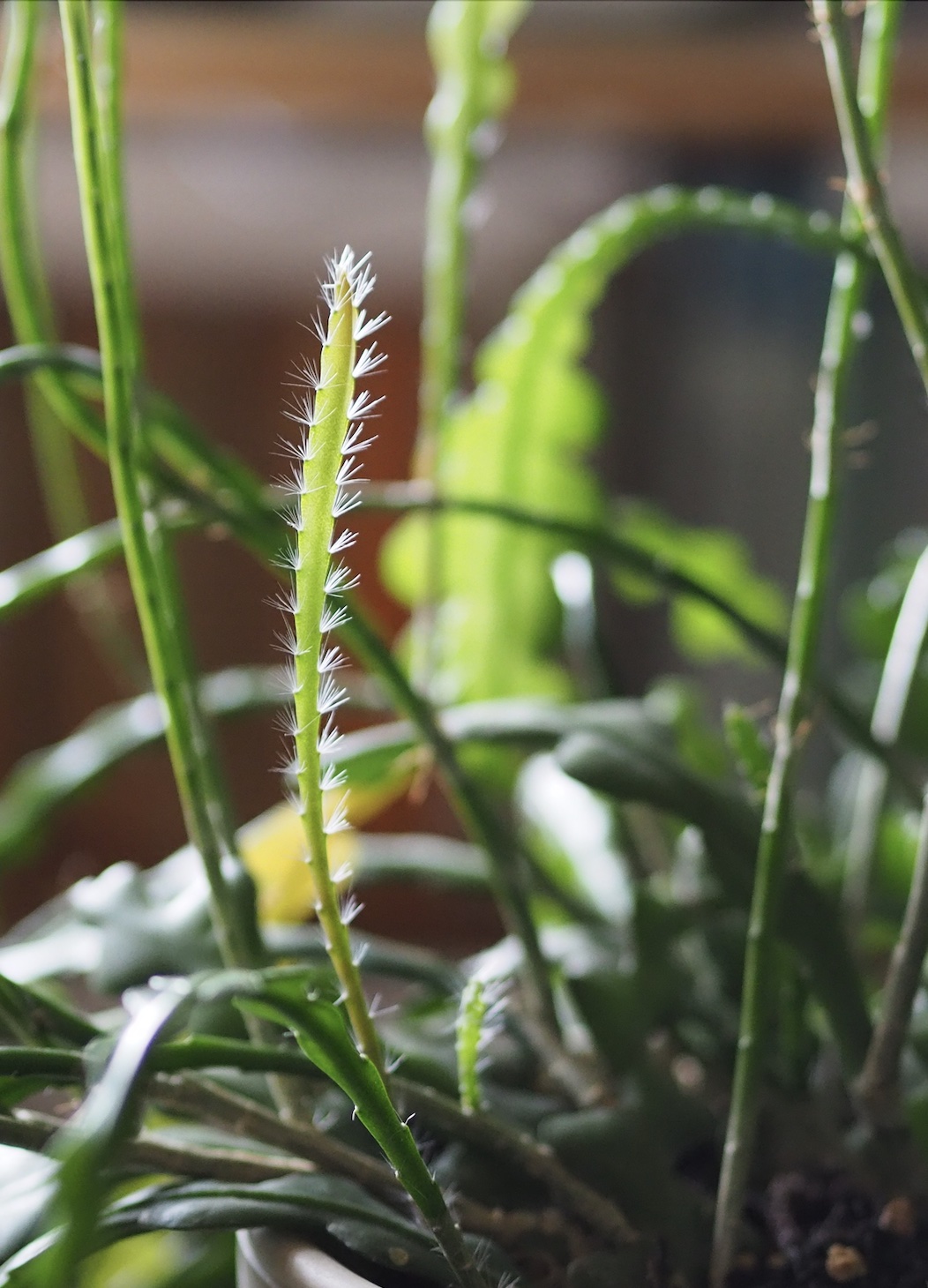
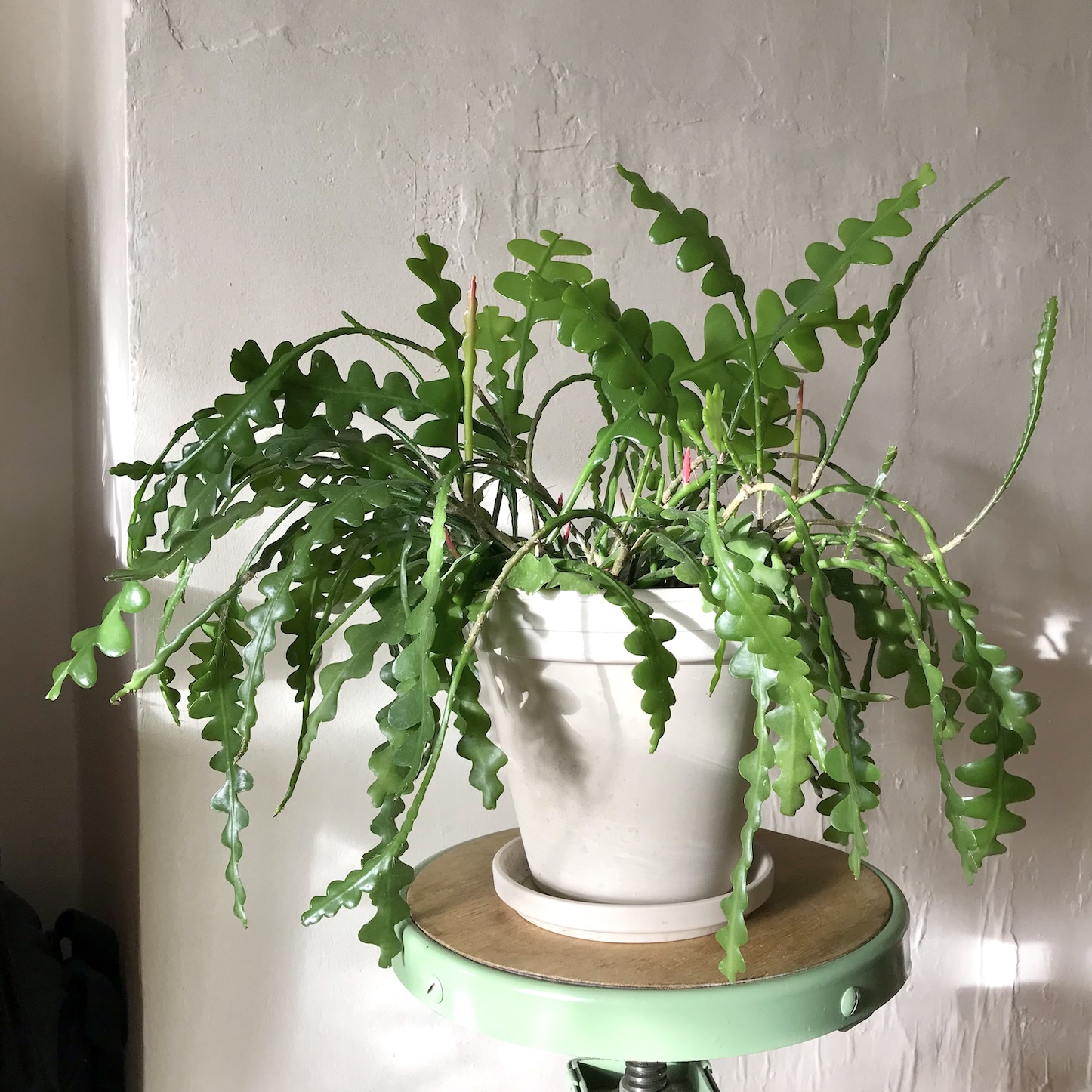

Selenicereus chrysocardium / Fern leaf cactus
This is one of my favourite-of-all-plants in my collection because I received it as a cutting from a plant friend in Sweden a few years ago as a very kind gesture. Despite getting lost in the postal service here in the UK for a couple of weeks (during Summer, no less) it perked up again after some water therapy + just look at it now! The photo below left shows how it began its time with me at HPH before propagating it (Summer 2018), followed by some growth progress…



Because of the way I came to inherit this Selenicereus chrysocardium, I do feel a certain responsibility to keep this plant happy!

Above is a mid-repotting shot from a repotting diaries post (more here). Below shows how my plant has developed over the last year in less than perfect conditions:

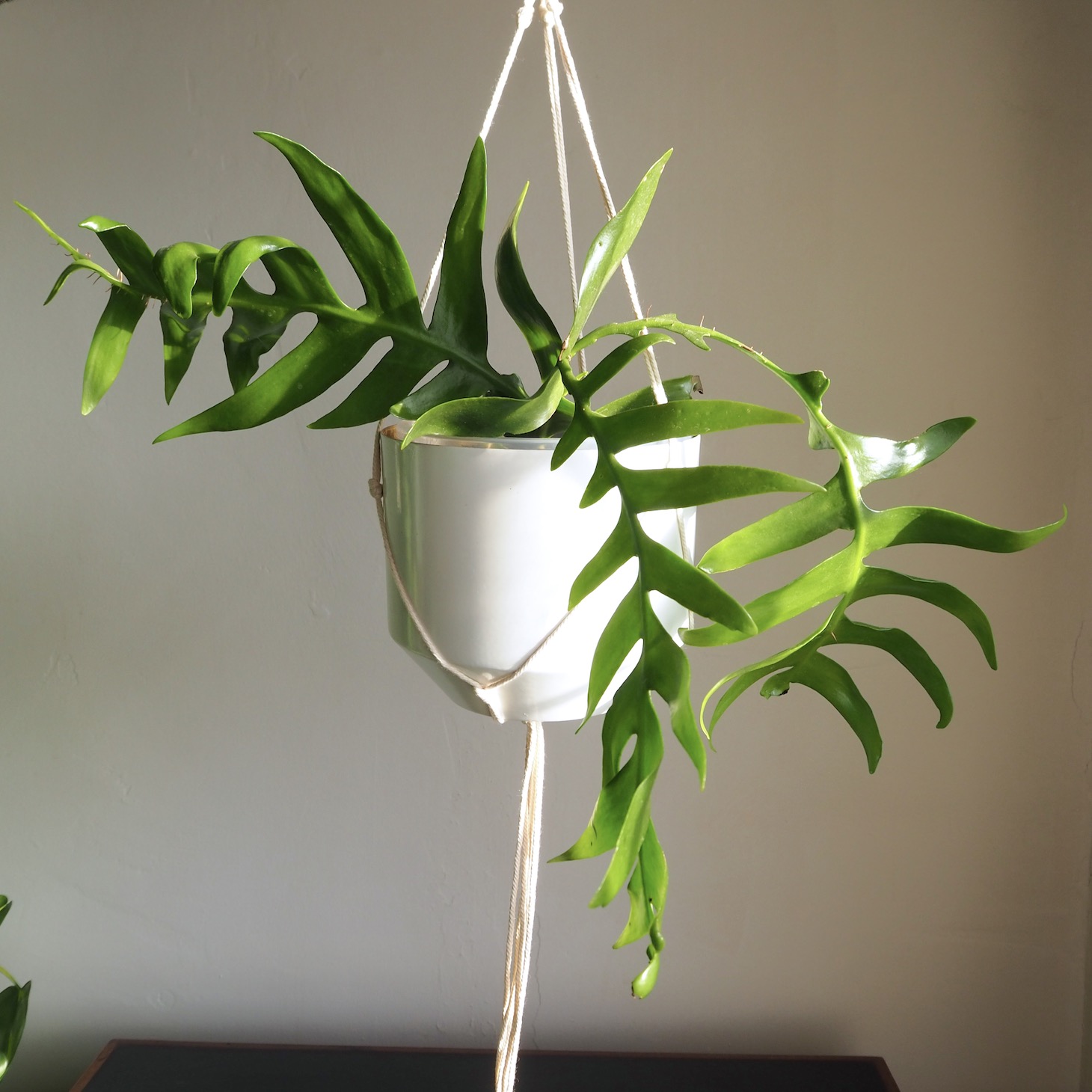
Selenicereus anthonyanus / St Anthony’s rik-rak
My Selenicereus anthonyanus was also a cutting that came in the plant parcel from Hillevi + you would be right in thinking that it’s really quite similar in appearance to a Disocactus anguliger — otherwise known as a fishbone cactus that I showed above! You’ll be able to see from the propagation section below how the plant started its growing journey here at HPH. As I was collating the photos together for this post, I was quite amazed at how this Selenicereus is now looking like an actual plant!



Here’s a comparison photo — below the Selenicereus anthonyanus to the left + the photo to the right shows its similarity to the Disocactus (to the far right of the frame). The Selenicereus anthonyanus has a more true ‘zig zag’ shape, whereas the Disocactus anguliger is more rounded:

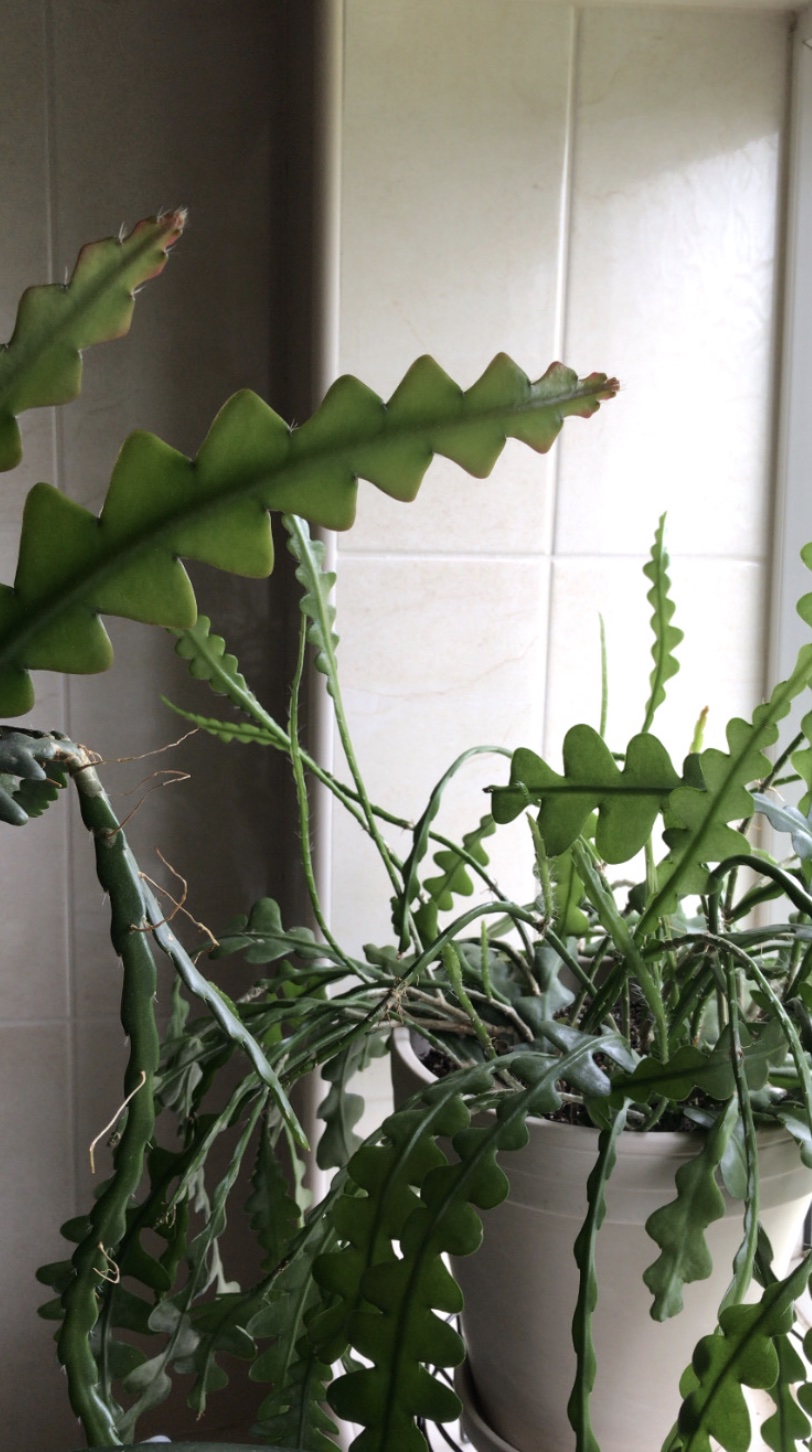
After growing my plant in decent conditions over the last year, I’ve been happy to see some transformative growth + as the plant has matured, the shape of the stems are looking more distinct + different to the disocactus anguliger. As with both of these plants, thinner leaves with less pronounced ‘zig zags’ are often present in younger plants but can also be as a result of a lack of light. They do widen as they grow but if leaves are very spindly + stretched they are likely to remain this way.
Rhipsalis cereuscula / coral cactus / rice cactus
Now onto my trio of Rhipsalis plants! Rhipsalis are a group that I didn’t really think much about for a long time + to be honest, I am not entirely sure when or where I got this plant from! I have a vague memory that it was one of those £1 rescue plant missions I was fairly obsessed with some time around 2016-7. I do remember that it started off as a really tiny plant, in a 5cm pot + I’ve had it for a long time, so that sounds about right. Either way, it was one of those houseplants that sat on my work desk, just doing its thing. I’d re-pot it around once every 18 months + water it when I remembered, but other that that, it wasn’t really anything special. But when I came to move, I picked up the plant + was so surprised by how it had been quietly growing away + it had blossomed into something quite cool-looking!



Rhipsalis baccifera / Rhipsalis cassutha / mistletoe cactus
This little Rhipsalis started off as a propagation experiment. Once rooted, it took a while to start trailing but when it did, I was captivated! The delicate nature of this one appealed to me more immediately than the coral cactus above so I think I’ve given this a bit more attention than some of my others! It has a soft, sculptural appearance that I love + whilst it might not be the largest of specimens, it’s growing slowly but steadily + it’s one of my favourites! It’s another one that has coped with a not-so-perfect position + it was still growing in winter here, when it was so cold in the cottage!



These can grow to be thick + beautiful trailing plants that will be in your collection for many years, so it’s one I’d definitely recommend.




Rhipsalis elliptica
This final Rhipsalis in my current collection was another propagation experiment because I just loved the weird shape of the leaves! They are like rows of diamond-shapes with scalloped edges stacked together + joined by their points! As bizarre as this description sounds, the photos below will illustrate what I mean a little better…
For me, this has been the plant that truly resists death because I am ashamed to admit I’ve neglected this one at times. I left it a little too close to the south-east facing window where it got quite a suntan last Summer. Then it ended up in a box for 2 weeks (long story). Then it actually bloomed! Plants can often bloom as a response to a period of stress so this was quite a nice surprise after all I’ve put this plant through! Maybe the plant was just trying to remind me that it existed, but whatever the case, the attention-seeking worked because I have been more diligent with it’s care since!

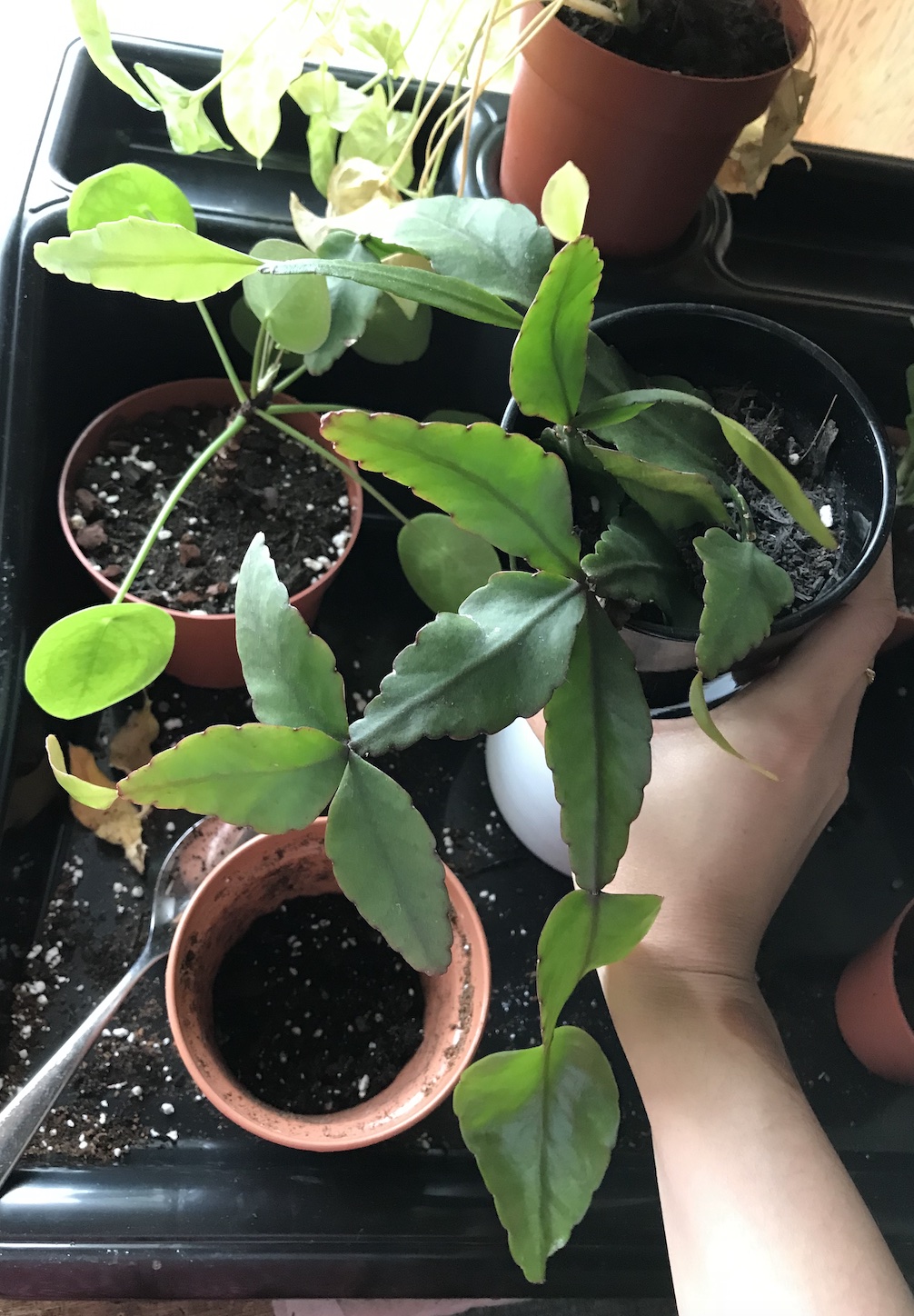

Jungle cactus care
As I always say, the best way to think about the care needs for any plant is to consider how they grow in their natural habitat. This can really help to elucidate the key elements that will help them to thrive. This group of cacti grow in jungles, woodlands + rainforests and are largely epiphytic/lithophytic, which means they grow on trees or rocks in their natural habitat.


LIGHT:
Bright-ish indirect light is the way to go with these plants but they are quite adaptable. I’ve had a year of really decent growth in this temporary cottage with this gang of jungle cacti positioned around 1-2 metres from south-east windows, sheltered by a net (I’m in the Northern hemisphere FYI) East-facing windows are particularly good for jungle cacti because they can handle the morning light as the sun rises, but are more protected from the stronger afternoon rays in this position. Bear in mind that these are the conditions that are personal to my current environment + are used as a guide for you to compare with your own home. It’s important to also remember that windows can be pretty different in size + if you live in a built up area, with other buildings close by, or if there are obstacles like trees outside, this all has an impact on the intensity of light. Given their natural habitats, these plants can tolerate a softer light — imagine the dappled light coming down through the forest canopy… but growth will be somewhat slower. Be aware of particularly thin + stretched stems which indicates the plant is reaching out for brighter conditions.
WATERING:
When the plant is actively growing during Spring + Summer, you can treat jungle cacti much like your other houseplants by watering when the top inch or two of the pot has dried out. But bear in mind that tropical + rainforest cacti aren’t very amenable to cold water as it can shock the roots, so room temperature (tepid) water is best. If you a bit of an over-waterer, you might find it useful to pot your jungle cacti in a terracotta planter, to counteract the excess moisture which could lead to mushy stems + rot. Watch out for shrivelled stems but check the state of the potting mix to identify whether under-watering or overwatering is the cause as both issues can look the same at a glance. As a point of reference, during the growing season (in my conditions) I was watering my plant once every 10-14 days, whereas in the cooler months, it’s more like once a month.
HUMIDITY:
In stark contrast to desert cacti, jungle cacti enjoy spaces with increased humidity, which can lead to larger + more speedy growth. As epiphytes, these cacti are not parasitic (do not take nutrients from their ‘host’) + are often found nestled in the branches of trees or rock crevices in the wild. Here, they will get a good amount of ambient humidity from being in a more sheltered position so somewhere like a kitchen or bathroom in the home would also be suitable. I kept my Selenicereus anthonyanus in the bathroom for a few months last Summer + it really enjoyed it + I witnessed lots of new growth with more pronounced ‘zig zags’.
TEMPERATURE:
Jungle cacti are happiest in temperatures between 15°C (59°F) + 25°C (78°F) + can cope in winter with conditions no lower than 10°C (50°F) + they are not tolerant to frost. Keep away from draughts or a heat source such as a radiator or you might end up with crisping!
FERTILISING:
Jungle cacti aren’t really heavy feeders like some houseplants, so I tend to feed mine around once a month with a succulent fertiliser or houseplant feed at half the recommended dilution rate. I’ve found that if they are in a good position with adequate light, these plants will grow readily without the need for lots of feed. If your climate is quite different to mine + you find your plants grow year-round, then more regular fertilising is fine.
PESTS:
Jungle cacti are generally pretty resilient to pests if their care routine is keeping the plant growing healthily. Feeding during Spring + Summer can also help to keep your plant strong in case of a pest attack. The main reason pests can appear is often a result of incorrect care, or very low humidity + under watering coupled with hot, dry conditions. Mealybugs are sometimes a problem in the crevices of the stems so keep an eye out for fluffy white deposits. If the attack is small, these can be wiped off with a cotton swab coated in rubbing alcohol + monitored. If you have been under watering or have kept your plant somewhere too bright, spider mite or scale can be problematic.
REPOTTING + POTTING MIX:
This plant gang don’t have a large root structure which means they don’t require regular repotting — I generally only re-pot my jungle cacti around once every 12-24 months. A well draining mix suits epiphytic plants because it helps to mimic the conditions they are used to growing in their native habitats + allow for increased aeration for the roots. I use a free-draining potting mix of peat-free houseplant compost, cacti + succulent mix, perlite, pumice/horticultural grit + chunky orchid bark. A few days prior to repotting, it’s a good idea to water your pot to reduce the risk of transplant shock + only really go up one pot size at a time too.
FLOWERS:
Flowers on these plants can be elusive + only appear on more mature specimens + their bloom time is only short — just a few days! To help encourage blooming, over winter try to keep your pot in a cooler place of around 11-14°C (52-57°F) + the potting mix on the dry side. Another way to encourage flowering is to train your plant to tolerate a brighter environment, but these plants can get sunburn if they are quickly moved from a shady position to somewhere too bright. This is shown as a reddish tinge to the leaves which will gradually fade after a time, but it’s best avoided if possible. By slowly increasing the intensity of light, you will acclimatise the plant + this will be more likely to trigger flowering. If you do notice buds forming, re-commence fertilising with your regular feed or preferably you can get your tomato feed out (a potassium (K) rich feed) to give your plant a helping hand with making these lovely blooms.
Propagation
As a disclaimer here, the propagation process with jungle cacti cuttings is relatively slow — though not as slow as with desert cacti, or a ZZ plant propagation for example. It’s perhaps most similar in speed to Hoya propagation in my experience, though everyone’s conditions are different, so this will fluctuate depending on your climate + your cuttings! Don’t let this put you off though — I hope the photographs of my plants dotted through this post are a testament to the satisfaction of how it feels to grow a plant from a cutting.
Propagating from cuttings can seem like a slow process if you are working with smaller cuttings + comparing them to larger, mature specimens you’ve seen on the internet. But big plants cost big bucks so I always prefer a propagation experiment. Try to embrace the process of propagation as a way of learning about your new plant + don’t be put off by comparison to ones that don’t resemble the humble beginnings of your cutting. An element I love about propagation is that when grown from a small cutting or plant, you can learn so much more about how it grows + importantly how it grows for you.
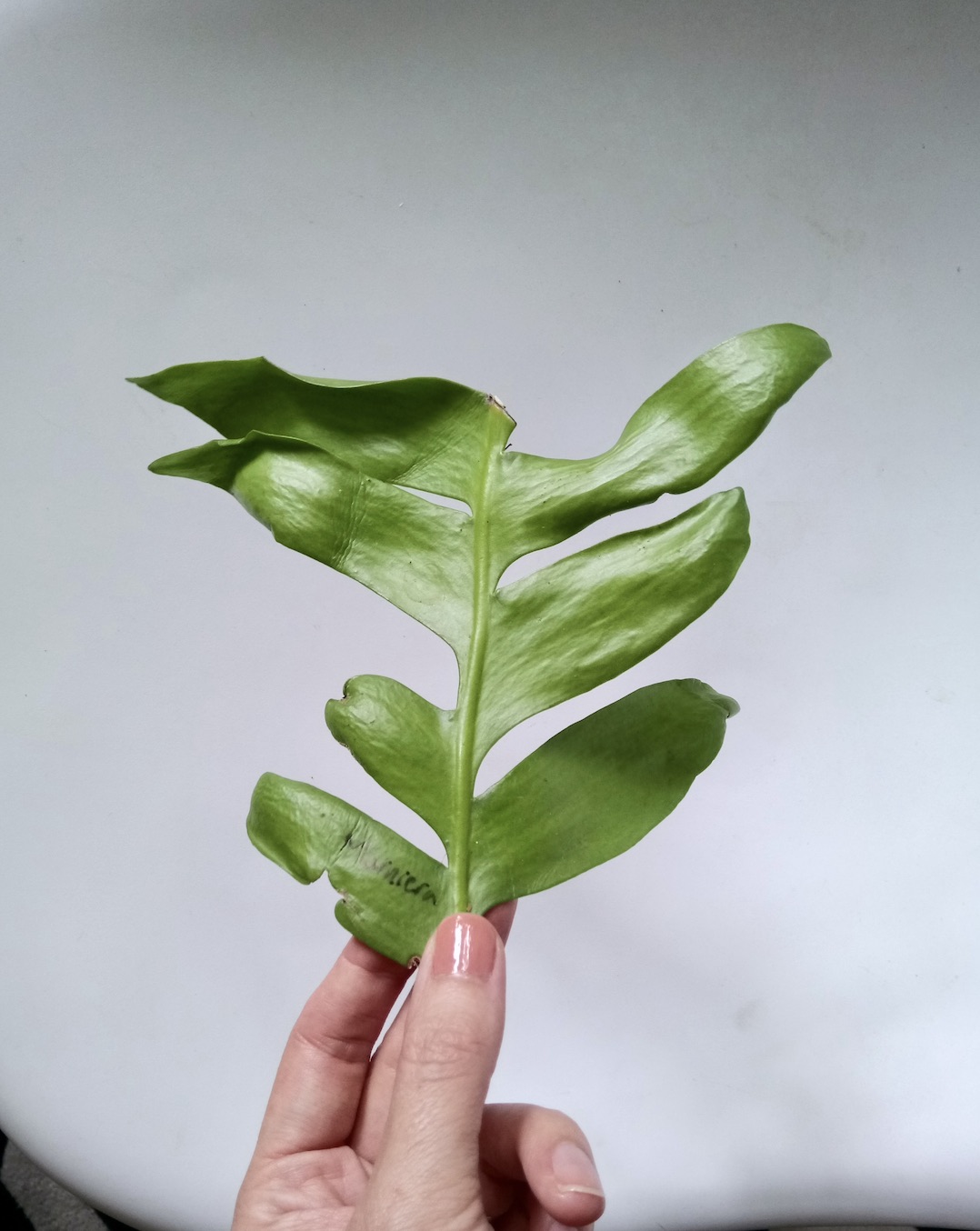


Always use a clean, sterile blade when taking cuttings + a snips that is sharp enough to make a clean cut. The most important thing to remember with these succulent-type stems is that you should leave the cut end callus over (seal over) adequately before putting in water. This is a game changer in getting your jungle cacti cuttings to root without rotting — more on that here. Also, make sure your cutting isn’t too small — I like to use stems that are around 4-6inches for best success.
In terms of the water prop/soil prop question, this is very much personal preference. Personally, I generally like to water propagate because I like to watch the process of roots forming, but I have also soil propagated Epiphyllum/Disocactus + Rhipsalis cuttings too. For this process, use a gritty cacti/succulent compost with added pumice or perlite. A small, shallow pot is an ideal propagation vessel if you have one — this will allow just enough of the stem to be covered to help prevent rot at the base (which can sometimes happen if the cutting is potted too deeply). To keep the cutting stable in the pot, adding a layer of horticultural grit is a tip I’d suggest here. Whichever propagation method you choose, place all propagations in a warm, humid environment with bright, indirect light. If you have a propagator this will come in handy, particularly if you are rooting your plants in the colder months of the year.



For a year or two as your plant gets settled into your space, you might still see it (as I often do) as a ‘propagation experiment with ‘x”… but then a liminal in-between space opens up where the plant feels less like a cutting + more like it’s becoming something else. Fast-forward a little while longer + you might start to recognise the pot as a little plant in it’s own right! I think the progress photos here show that this can be such a rewarding experience that also teaches us patience + how to tune into the rhythms of ‘plant time’ which I strongly believe can calm us + reduce our heart rates as we appreciate a slower process at work.
I hope you enjoyed this jungle cactus post + seeing some of the plants I have in this group — it’s one I’ve been meaning to put together for a while! It’ll be saved under my ‘Plant Care Guides’ if you want to refer back to it at another time + here are some pins to save or share with someone that also loves interesting plants:
*Affiliate links are used in the post which means I can receive a (very) small amount of commission if you make a purchase — thank you for supporting my blog. I often get asked where I get specific items from so have linked these here. I have bought all these products with my own money.


Leave a Reply